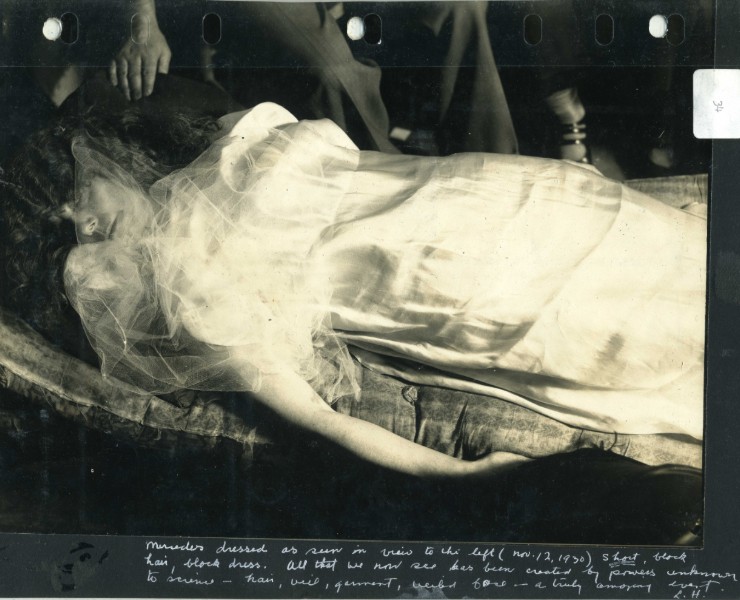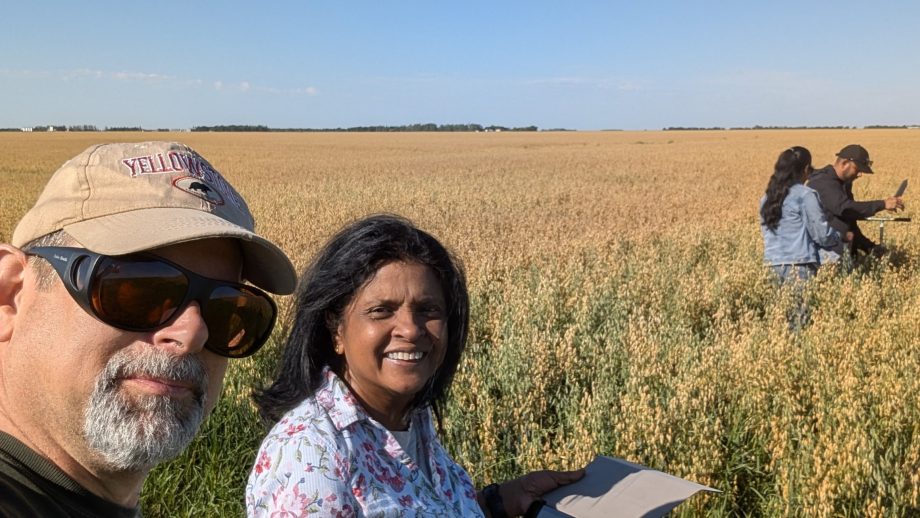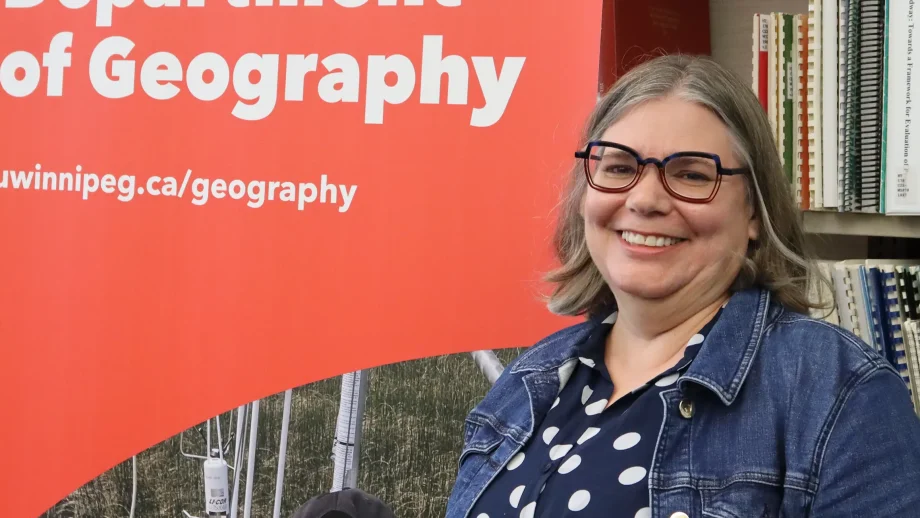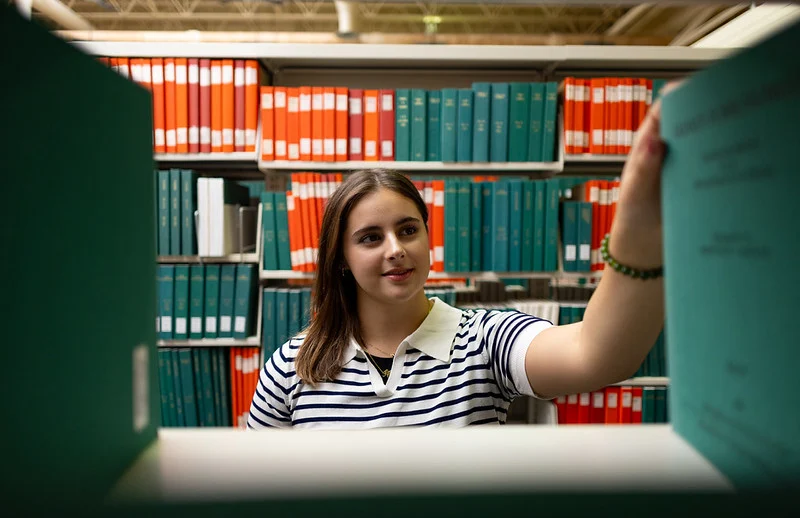An extraordinary set of black-and-white photographs of “ghosts”, taken in Winnipeg in the early 1920s, have caught the attention of UWinnipeg’s art historian Dr. Serena Keshavjee.
The photo collection, which is the main source of Keshavjee’s study of ghost imagery in the nineteenth and twentieth century, are part of a little known archive, housed in the University of Manitoba Archives & Special Collections. They were taken by respected physician Dr. Thomas Glendenning Hamilton and his wife, Lillian Forrester Hamilton over a period of fifteen years, and provide valuable insight into the state of science, technology, and photography in the prairies in the twentieth century.
The Hamiltons, supported by a trans-global network, produced a body of extraordinary photographs detailing non-orthodox scientific theories and “popular” but unsanctioned religious beliefs that thrived on the Prairies between the Wars.
The Hamiltons’ 700 photographs of ‘teleplasmic materialisations,’ were understood as evidentiary proof of ghosts, and this body of pseudo-scientific photography brought them a certain amount of acclaim in Winnipeg and beyond.
Photo collection provides insight into 1920’s spiritualist movement
The Hamiltons’ technologically sophisticated laboratory, set up in a small bedroom on the second floor of the family home, and doctors office, attracted friends who were interested in technology, photography, and ghosts.
The experiments tested mediums for their psychic ability to communicate with ghosts. At the time this was accepted as scientific and served as an entrée into the high-profile world of celebrity spiritualists.
“The photographs are high-quality, aesthetically interesting images that are as intriguing today as they were in the 1920’s,” said Keshavjee. “I am studying these photographs, not as evidence that ghosts exist, but as a window into settler society in Winnipeg between the world wars. These images reflect popular religious beliefs; the use of technology in science, and the acceptance of modernist aesthetics in Canada. They reveal a network of doctors and physicists in the early twentieth century who were working to re-enchant science.”
It was not difficult for the Hamiltons to find supporters and witnesses from Winnipeg’s most elite families, including lawyer Isaac Pitblado (1867-1964), Dr. Bruce Chown (1893-1986), and Reverend Dr. William Talbot Allison, PhD (1875-1941), a professor of English at Wesley College, who initiated the Hamiltons into séances in 1918.
Other fans of Hamilton’s work and discovery includes the late Canadian Prime Minister William Lyon Mackenzie King, and spiritualists, including Mrs. Jean Doyle and Sir Arthur Conan Doyle, the author of Sherlock Holmes, world-class physicist Sir Oliver Lodge, the famous medium Mina “Margery” Crandon and her husband Dr. Le Roi Crandon.
With the help of these social connections, Hamilton was invited to deliver illustrated lectures in international cities like New York, NY and London, England, and across the country in Montreal and Toronto, where he shared how his innovative research methods enabled him to capture teleplasms on analogue film, one of the few people to succeed in this endeavor.
The Hamiltons increased Winnipeg’s reputation as a “psychic centre.” This theme still resonates over the decades. Internationally-acclaimed filmmaker and UWinnipeg alumni Guy Maddin’s film My Winnipeg and Frank Albo’s popular Hermetic tours of the Manitoba Legislative building play with a notion of a supernatural Winnipeg.
“It is also fascinating to me, as an art historian, to see how many artists have worked with this archival material,” said Keshavjee. “I think these images attract artists because of their modernist stylings. Hamilton was also saw them aesthetically. He displayed them in an exhibition at the Winnipeg Legislative building in 1930, one of the first examples of the aestheticization of scientific photography in Canada.”
About Dr. Thomas Glendenning Hamilton
Hamilton ran a thriving practice as a doctor and surgeon from his house on Kelvin Avenue in Winnipeg, now the Winnipeg landmark Hamilton House.
As an assistant surgeon at the Winnipeg General Hospital, he lectured at the Medical Faculty of the University of Manitoba. He was well-represented in professional medical associations, elected as Honorary Secretary of the Manitoba Medical Association, and later President of the Canadian Medical Association.
Internationally, he was a Fellow of the American College of Surgeons and the British Medical Association. He was also respected beyond the medical profession,and was an active member of the Winnipeg Public School Board. According to Walter Meyer zu Erpen, Hamilton was a reformist in his political views, and indeed, he was elected as a Liberal in 1915 to the Manitoba Legislative Assembly. Hamilton also played the role of elder to the Presbyterian congregation in Elmwood for 28 years.
Keshavjee was awarded a Social Sciences and Humanities Research Council of Canada grant to write a monograph, and work towards a public exhibition, based on the photographs from the Hamilton Family Foundation.





